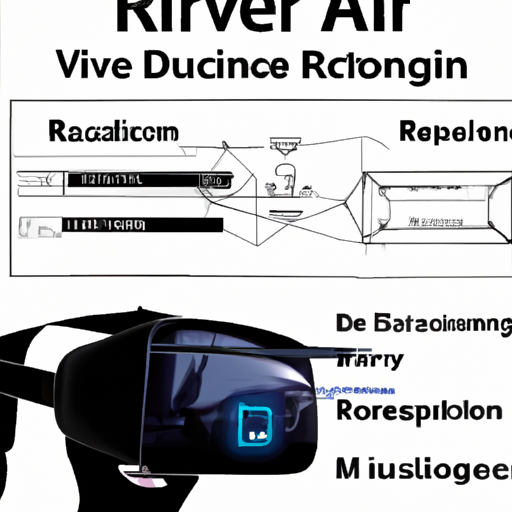-
Table of Contents
“Experience the Future of Reality with VR/AR Hardware and Devices!”
Introduction
Virtual Reality (VR) and Augmented Reality (AR) hardware and devices are becoming increasingly popular as technology advances. These devices allow users to experience immersive, interactive, and engaging virtual worlds. VR headsets, controllers, and other hardware provide users with a way to interact with virtual environments in a more natural and intuitive way. AR devices, such as smart glasses, allow users to view and interact with digital content in the real world. With the help of these devices, users can explore virtual worlds, play games, and even create their own virtual experiences. With the ever-growing popularity of VR and AR, the hardware and devices available are becoming more advanced and user-friendly.
A Comparison of the Top VR/AR Headsets on the Market
Virtual Reality (VR) and Augmented Reality (AR) technology have become increasingly popular in recent years, with a wide range of headsets now available on the market. This article will compare the top VR/AR headsets currently available, looking at their features, capabilities, and price points.
The Oculus Quest 2 is a standalone VR headset that offers a powerful and immersive experience. It features a high-resolution display, a wide field of view, and six degrees of freedom (6DoF) tracking. The headset also has built-in speakers and a microphone, as well as a 3.5mm audio jack for headphones. The Oculus Quest 2 is priced at $299.
The HTC Vive Cosmos is a PC-powered VR headset that offers a high-end experience. It features a high-resolution display, a wide field of view, and 6DoF tracking. The headset also has built-in speakers and a microphone, as well as a 3.5mm audio jack for headphones. The HTC Vive Cosmos is priced at $699.
The Microsoft HoloLens 2 is an AR headset that offers a unique experience. It features a high-resolution display, a wide field of view, and 6DoF tracking. The headset also has built-in speakers and a microphone, as well as a 3.5mm audio jack for headphones. The Microsoft HoloLens 2 is priced at $3,500.
The Sony PlayStation VR is a VR headset that is designed for use with the PlayStation 4 console. It features a high-resolution display, a wide field of view, and 6DoF tracking. The headset also has built-in speakers and a microphone, as well as a 3.5mm audio jack for headphones. The Sony PlayStation VR is priced at $299.
The Samsung Gear VR is a mobile VR headset that is designed for use with select Samsung smartphones. It features a high-resolution display, a wide field of view, and 6DoF tracking. The headset also has built-in speakers and a microphone, as well as a 3.5mm audio jack for headphones. The Samsung Gear VR is priced at $129.
In conclusion, there are a wide range of VR/AR headsets available on the market, each offering different features and capabilities. The Oculus Quest 2, HTC Vive Cosmos, Microsoft HoloLens 2, Sony PlayStation VR, and Samsung Gear VR are some of the top headsets currently available, each offering a unique experience at different price points.
Exploring the Benefits of Wireless VR/AR Devices
Wireless virtual reality (VR) and augmented reality (AR) devices are becoming increasingly popular in the tech world. These devices offer a range of benefits that make them attractive to both consumers and businesses. In this article, we will explore the advantages of wireless VR/AR devices and how they can be used to enhance the user experience.
One of the primary benefits of wireless VR/AR devices is the freedom they offer. By eliminating the need for cables and wires, users can move freely and interact with their environment without being restricted by cords. This allows for a more immersive experience, as users can move around and explore their virtual or augmented world without worrying about tripping over wires.
Another advantage of wireless VR/AR devices is the improved portability. Without the need for cables, users can easily take their device with them wherever they go. This makes it easier to use the device in different locations, such as at home, in the office, or even on vacation.
Wireless VR/AR devices also offer improved performance. By eliminating the need for cables, the device can run more efficiently and with less latency. This can result in a smoother and more responsive experience, which can be especially beneficial for gaming and other interactive applications.
Finally, wireless VR/AR devices can be used to enhance the user experience in a variety of ways. For example, they can be used to create more immersive and interactive experiences, such as virtual tours or interactive educational experiences. They can also be used to create more engaging and realistic simulations, such as flight simulators or virtual reality training programs.
In conclusion, wireless VR/AR devices offer a range of benefits that make them attractive to both consumers and businesses. By eliminating the need for cables and wires, users can move freely and interact with their environment without being restricted by cords. This allows for a more immersive experience, as users can move around and explore their virtual or augmented world without worrying about tripping over wires. Additionally, wireless VR/AR devices offer improved portability and performance, as well as the ability to enhance the user experience in a variety of ways.
The Latest Developments in VR/AR Hardware
Virtual Reality (VR) and Augmented Reality (AR) are two of the most exciting and rapidly developing technologies of the 21st century. As the technology continues to evolve, so too do the hardware options available to users. In this article, we will explore the latest developments in VR/AR hardware.
One of the most significant advancements in VR/AR hardware is the introduction of standalone headsets. These headsets are self-contained and do not require a connection to a computer or console. This makes them much more portable and accessible than traditional headsets, which must be connected to a device. Standalone headsets are also more powerful than their predecessors, with improved graphics and processing capabilities.
Another major development in VR/AR hardware is the introduction of eye-tracking technology. This technology allows the headset to track the user’s eye movements, allowing for more immersive and interactive experiences. This technology is also being used to create more realistic and lifelike virtual environments.
The introduction of haptic feedback is another major development in VR/AR hardware. Haptic feedback is a type of technology that allows the user to feel physical sensations when interacting with virtual objects. This technology is being used to create more realistic and immersive experiences.
Finally, the introduction of motion tracking technology is another major development in VR/AR hardware. This technology allows the user to move their body in the virtual world, allowing for more realistic and interactive experiences.
These are just a few of the latest developments in VR/AR hardware. As the technology continues to evolve, we can expect to see even more exciting and innovative hardware options in the future.
How to Choose the Right VR/AR Controller for Your Needs
When it comes to virtual reality (VR) and augmented reality (AR) experiences, the controller you choose can make or break the experience. With so many different controllers on the market, it can be difficult to know which one is right for you. To help you make the best decision, here are some key factors to consider when choosing a VR/AR controller.
1. Comfort: The controller should fit comfortably in your hand and be easy to use. Look for controllers with ergonomic designs that are lightweight and have a good grip.
2. Compatibility: Make sure the controller is compatible with the VR/AR headset you are using. Some controllers are designed to work with specific headsets, while others are compatible with multiple headsets.
3. Features: Consider the features of the controller. Look for controllers with motion tracking, haptic feedback, and other features that will enhance your VR/AR experience.
4. Price: Price is an important factor to consider when choosing a controller. Look for controllers that offer the features you need at a price that fits your budget.
By considering these factors, you can find the right VR/AR controller for your needs. With the right controller, you can enjoy a more immersive and enjoyable VR/AR experience.
The Pros and Cons of Different Types of VR/AR Headsets
Virtual Reality (VR) and Augmented Reality (AR) headsets are becoming increasingly popular as technology advances. These headsets offer a variety of features and capabilities, and each type of headset has its own advantages and disadvantages. This article will provide an overview of the pros and cons of the different types of VR/AR headsets.
The first type of headset is the tethered headset. These headsets are connected to a computer or console, and they provide the most immersive experience. The main advantage of tethered headsets is that they offer the highest quality visuals and audio. They also provide the most accurate tracking and motion control. However, the main disadvantage of tethered headsets is that they require a powerful computer or console to run them, which can be expensive.
The second type of headset is the standalone headset. These headsets are self-contained and do not require a computer or console. The main advantage of standalone headsets is that they are more affordable than tethered headsets. They also provide a more portable experience, as they do not require a powerful computer or console. However, the main disadvantage of standalone headsets is that they do not provide the same level of visuals and audio as tethered headsets.
The third type of headset is the mobile headset. These headsets are designed to be used with a smartphone, and they provide a more affordable and portable experience. The main advantage of mobile headsets is that they are more affordable than tethered and standalone headsets. They also provide a more portable experience, as they do not require a powerful computer or console. However, the main disadvantage of mobile headsets is that they do not provide the same level of visuals and audio as tethered and standalone headsets.
In conclusion, each type of VR/AR headset has its own advantages and disadvantages. Tethered headsets provide the highest quality visuals and audio, but they require a powerful computer or console to run them. Standalone headsets are more affordable and portable, but they do not provide the same level of visuals and audio as tethered headsets. Mobile headsets are the most affordable and portable, but they do not provide the same level of visuals and audio as tethered and standalone headsets. Ultimately, the type of headset that is best for you will depend on your budget, needs, and preferences.
Conclusion
In conclusion, VR/AR hardware and devices have come a long way in recent years, and they are continuing to evolve and improve. With the advancements in technology, these devices are becoming more accessible and affordable, making them a viable option for many people. As the technology continues to develop, we can expect to see even more innovative and immersive experiences that will revolutionize the way we interact with the world around us.




